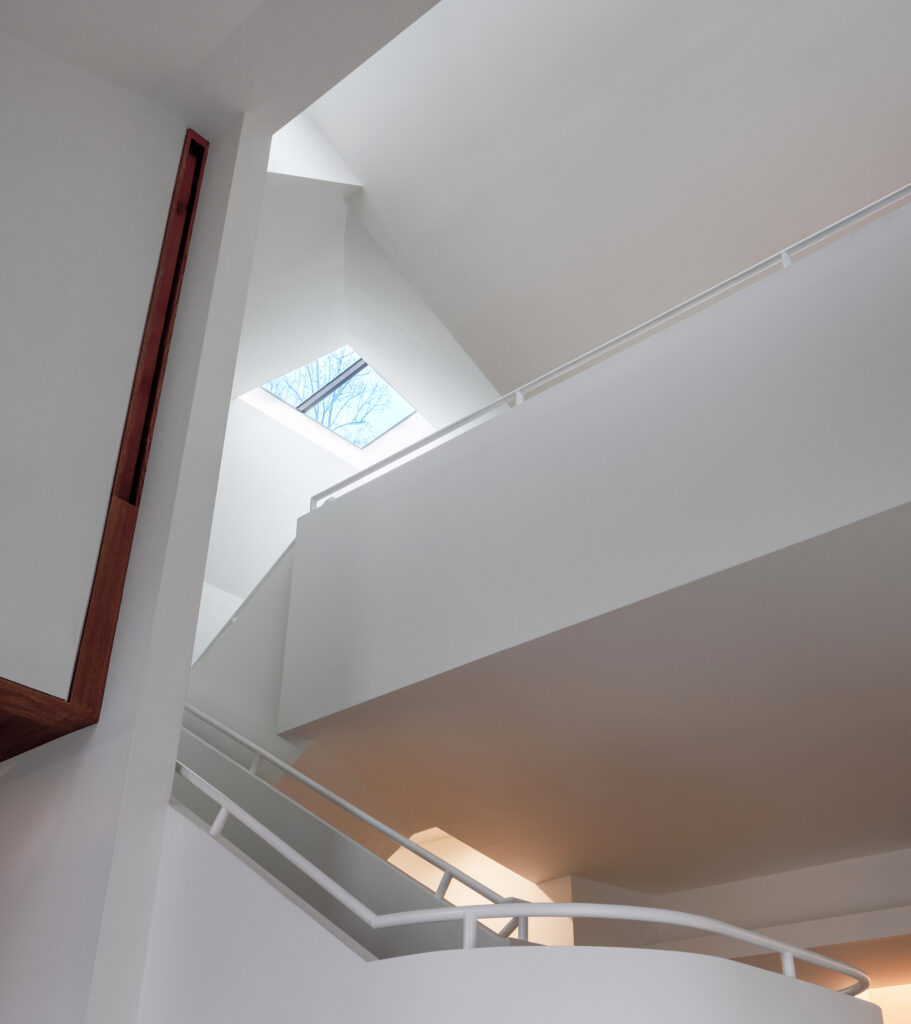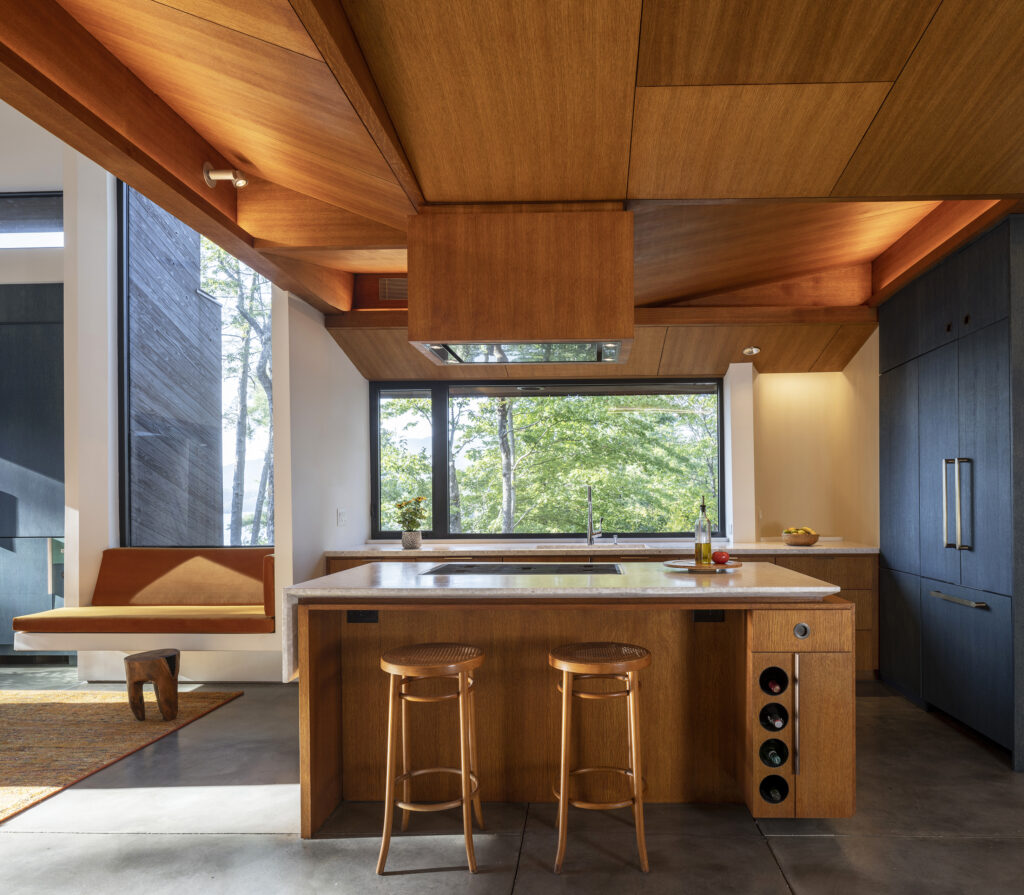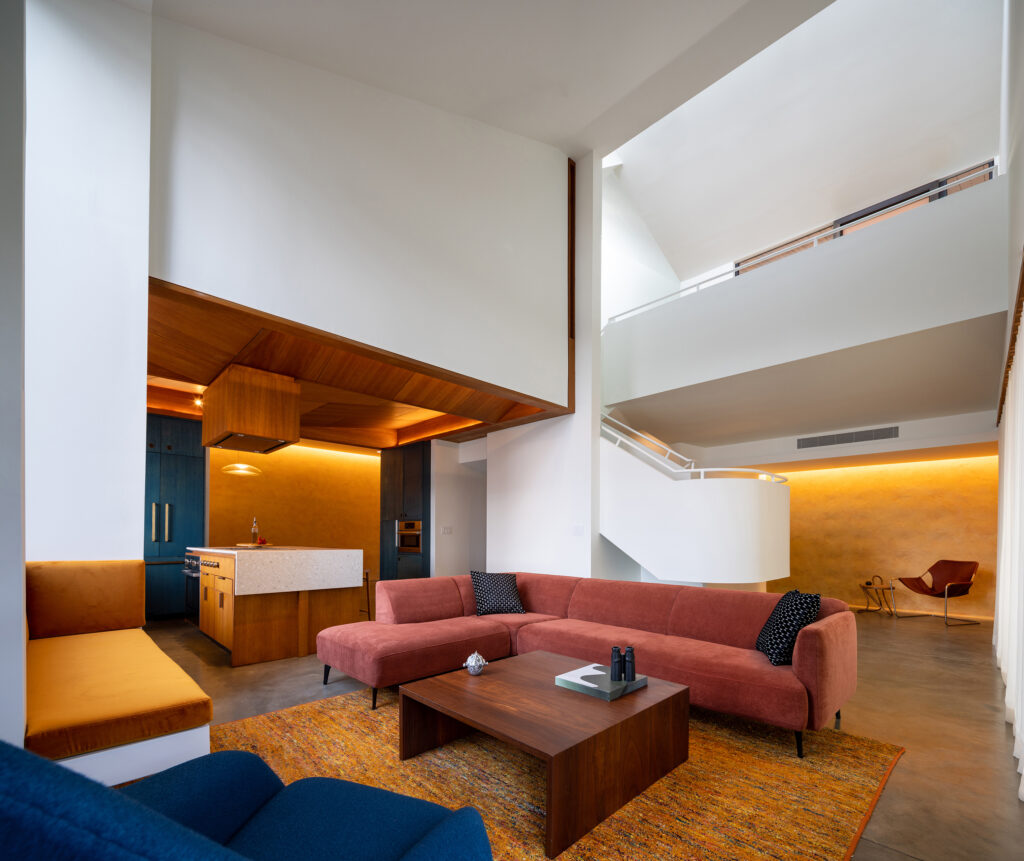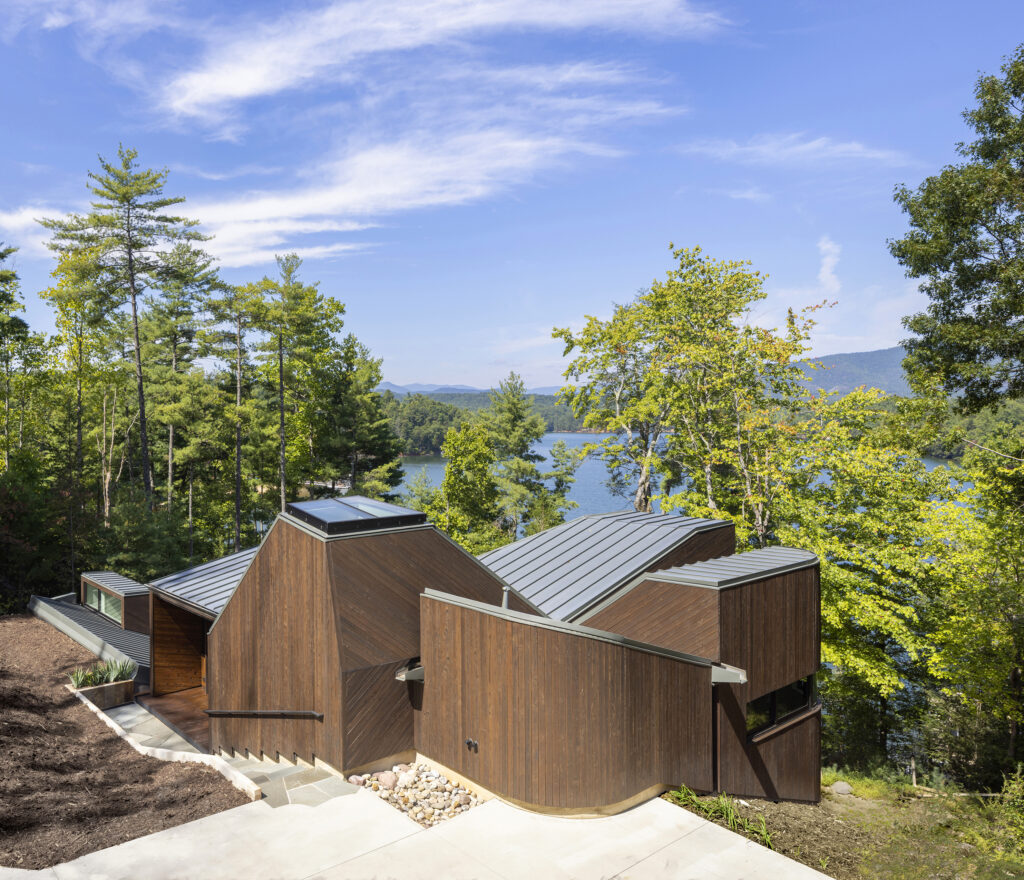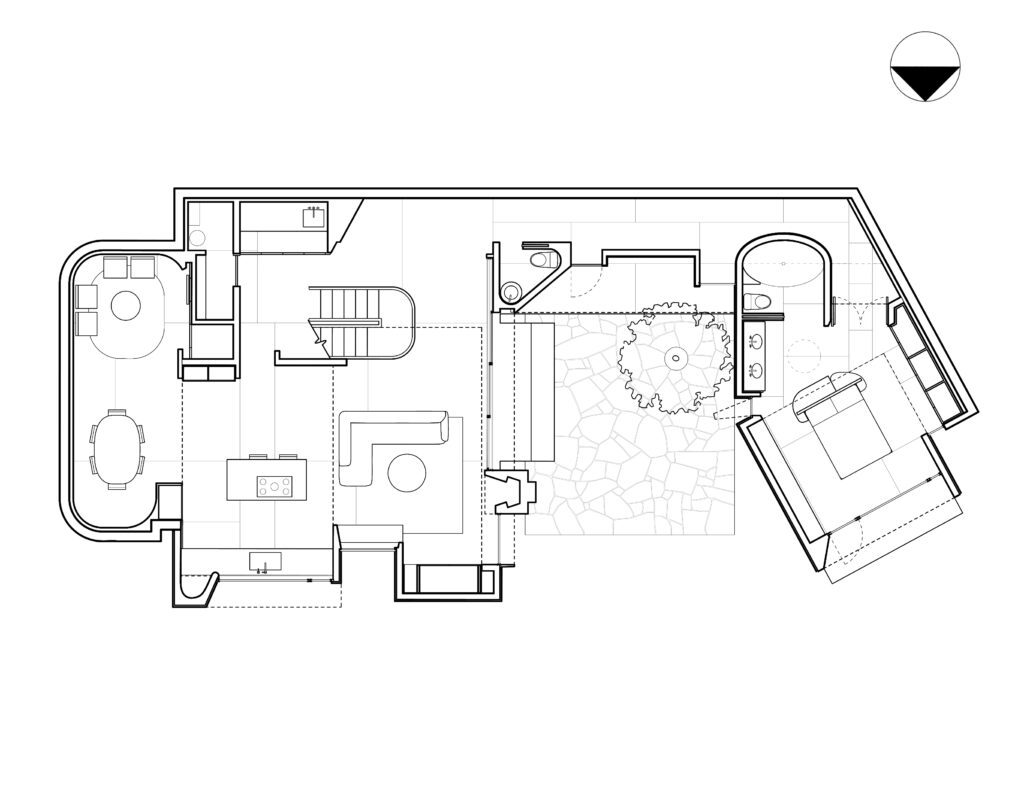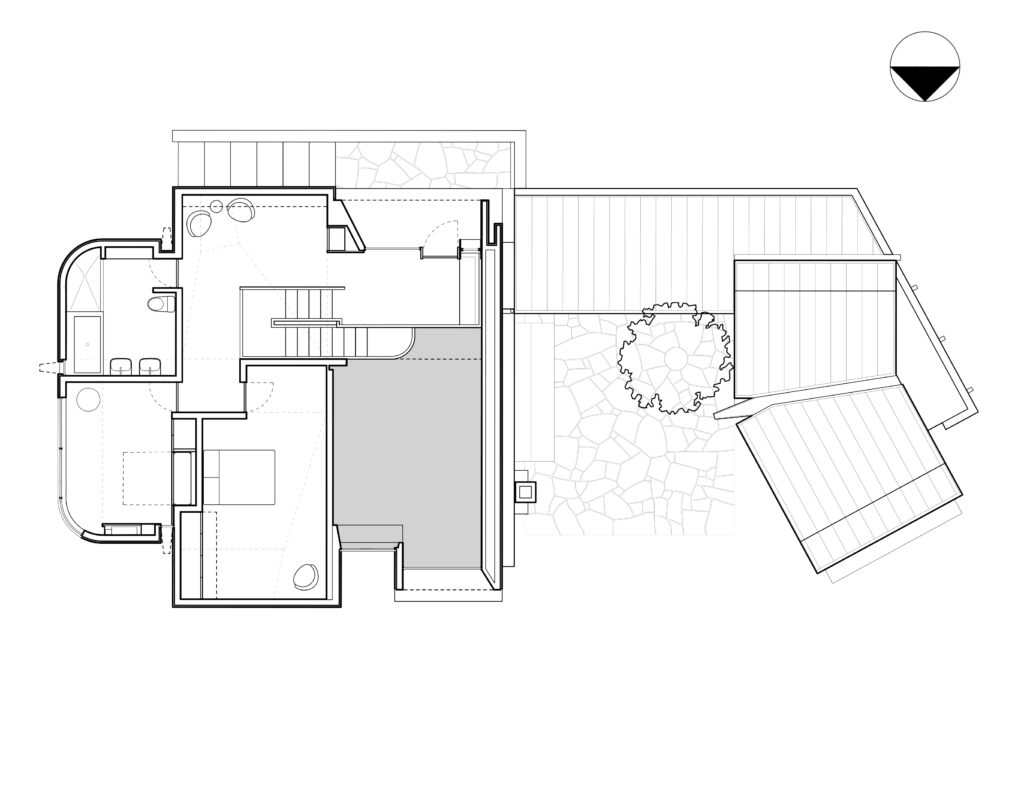
By William Richards
Designing a home for one’s parents is a complicated proposition—and this sort of commission might very well be the truest test of a designer’s mettle. Mom and Dad aren’t part of a “user group,” after all. Yet, it’s an act that’s part of architecture’s lore over the past century and the fact is you’d need a lot of hands to count the number of times an architect has designed a home for their parents. Charles Gwathmey did it. Robert Venturi did it. Arquitectonica’s Laurinda Spear and Bernardo Fort-Brescia did it. Ditto for Frank Lloyd Wright, George Howe, and Le Corbusier.
Allure editor-at-large Joan Kron once wrote a brief piece for The New York Times in 1981 covering this small but notable corner of architectural production. In it, Steven Izenour, who was designing a home for his parents at the time, cautioned against the act in no uncertain terms. “It forces you to deal with things you didn’t resolve when growing up,” he said. “Never design a house for your parents.”
But, that’s just what Michael Overby did for his parents, working with his partner Emma Fuller—the two forming the nucleus of the New York firm Fuller/Overby, which they started in 2019. The team designed Nebo House, a 2,750 square-foot lakeside home in North Carolina for Kathi and Ken Overby that splits the architectural atom, creating both a sophisticated design and an obviously functional response to the brief: make an easy to navigate, easy to maintain home for entertaining.
“It was their first time working with an architect—and the first time building a house,” says Overby of his client-parents, “and so that leaves such a wide field of possibilities.”
| Photography Copyright © Paul Warchol Photography. Plans courtesy Fuller/Overby. |
The conversations about needs and design were iterative. It started when they helped the Overbys scout land in an area where they’d had their honeymoon, long before any talk of retirement. They showed the Overbys arrays of other projects they admired, and tried to focus their attention on certain details like corners or materials. They did a lot of physical modeling to work out some of their ideas to, say, reduce the overall height of the house by rearranging the program, and its forms—ending with the courtyard house typology that’s unique for North Carolina, but certainly a time-honored approach.
“One has to make an educated choice to balance everything,” says Fuller, grabbing an early model of the project next to her, “and, in this case, this version was embedded less-so in the land, and it was more vertical—with a garage like the typical American home they had been accustomed to, and a bedroom on top of that.”
Suddenly, the home that might have looked more like a woodsy ranger station reaching for the treetops became a much more contextual, low-slung home that took advantage of the landscape while also showcasing Fuller and Overby’s Cooper Union credentials. Nebo House received a 2023 Award of Merit from AIA Virginia in its annual Design Awards program.
Tucked into the hillside, the home possesses a natural insulation strategy that makes it seem like a couple of different houses, depending on your standpoint. On one hand—and because of the fact that half of it abuts earth—the house almost functions as a passive house, “without a lot of the investment passive house builders make,” says Fuller. Overby notes their decisiveness about window placement to take advantage of the breezes off the lake, and the aperture sizes to draw in that cool air have rendered barely-there energy bills, too. Since completing the house, Overby and Fuller have had several chances to return, and report that the favorable energy use intensity measurements are precisely what they expected them to be.
On the other hand, and from a design perspective, it’s not just a borrowed vernacular cabin form. From the road looking down on the site, some have called it a “village of small pavilions” (in the words of Cliff Pearson writing for Architectural Record). Feeling less committal, Kate Mazade called them “pavilion-like volumes,” writing for Dezeen. You don’t have to squint very hard to see their point, but it seems as if there’s more to be said about the whole, itself, at Nebo House, rather than the parts—and in this respect Charles Moore, Donlyn Lyndon, William Turnbull, and Richard Whitaker’s work at Sea Ranch come to mind, not to mention Marcel Breuer’s own Cape Cod house in Wellfleet, Massachusetts.
“We looked at a wide range of houses, and there was an educational aspect to this for us and for my parents, too” says Overby, “so we put together a bunch of references of things we liked in other projects, and we walked them through it.”
Material choices define the life of Nebo House, too, notably the cypress cladding on the exterior. There’s also a generous amount of rift sawn white oak millwork in certain parts of the house that creates a ribbon of warmth as a counterpoint to the 1920s steamship lines that call to mind the Maison La Roche or Villa Savoye in their spareness. That ribbon is functional, concealing storage or lighting or kitchen hood ventilation, as well as formal, announcing a change in program for an otherwise open plan.
As a courtyard house, though, the focus is really what client Kathi Overby once called “the second living room,” or the courtyard, itself, which is the best place in autumn to understand the indoor-outdoor connection most acutely—when the surrounding canopy has a honey yellow glow, much like the stained millwork inside.
“The courtyard, the use of oak—it was a good way to take the conversation away from style for the clients and toward things like context,” says Fuller, “and a relationship to the landscape.”
William Richards is a writer and editorial consultant based in Washington, D.C. From 2007 to 2011, he was the Editor-in-Chief of Inform Magazine.
Project credits:
- Architect: Fuller/Overby
- Structural Engineer: Nat Oppenheimer, Silman
- Mechanical Engineer: Mark Cambria, Fusion Systems
- General Contractor: Cottonwood Development
- Roofing: Rhenizink, Natural Metal Associates
- Cladding: Nakamoto Forestry
- Cabinetry: Southfork Millwork
- Stonework: Hammerhead Stoneworks
- Lighting Supply: Tony DeLaurentis, International Lights

